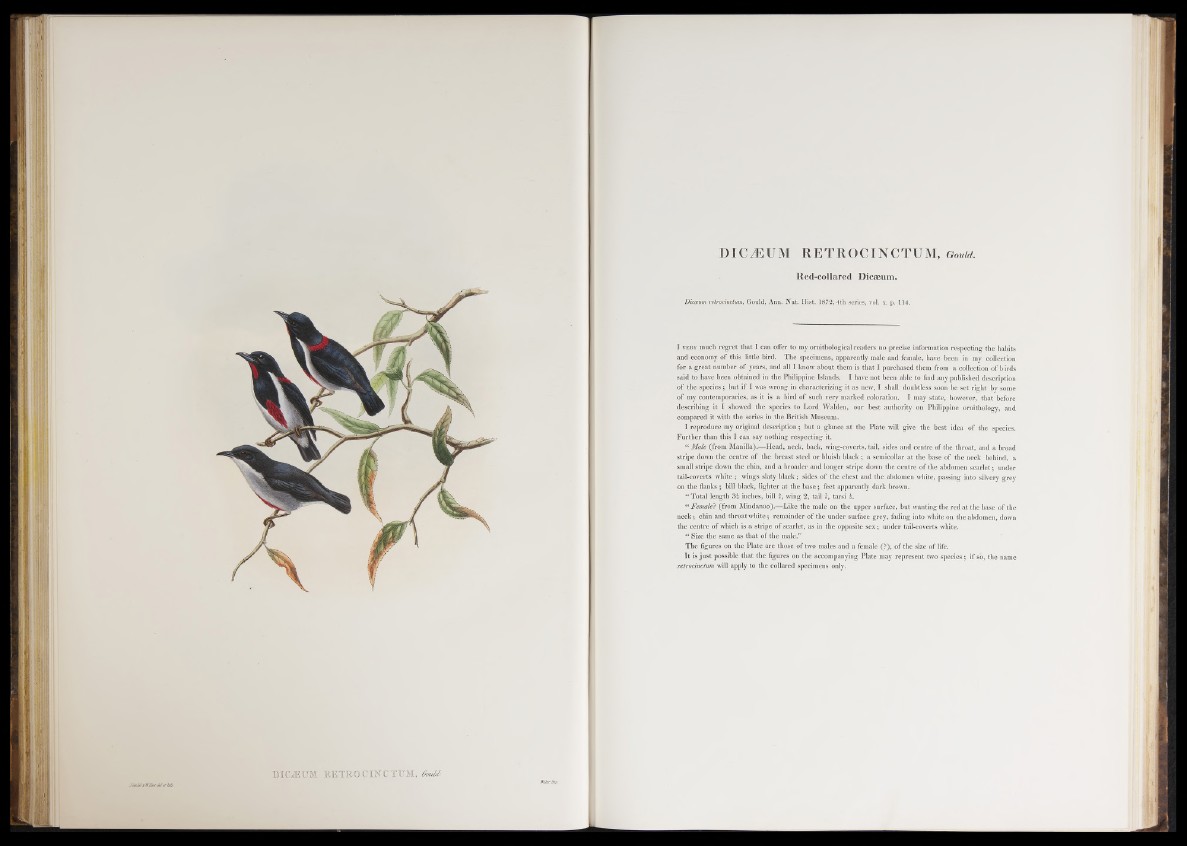
D I C J E U M R E T R O C I N C T U M , G o u l d .
Red-collared Dicaeum.
Dicceum retrocinctum, Gould, Ann. Nat. Iiist. 1872, 4th series, vol. x. p. 114.
I very much regret that I can offer to my ornithological readers no precise information respecting the habits
and economy of this little bird. The specimens, apparently male and female, have been in my collection
for a great number of years, and all I know about them is that I purchased them from a collection of b irds
said to have been obtained in the Philippine Islands. I have not been able to find any published description
of the species; but if I was wrong in characterizing it as new, I shall doubtless soon be set right by some
of my contemporaries, as it is a bird of such very marked coloration. I may state, however, that before
describing it I showed the species to Lord Walden, our best authority on Philippine ornithology, and
compared it with the series in the British Museum.
I reproduce my original description; but a glance at the Plate will give the best idea o f the species.
Further than this I can say nothing respecting it.
“ Male (from Manilla).—Head, neck, back, wing-coverts, tail, sides and centre o f the throat, and a broad
stripe down the centre of the breast steel or bluish black ; a semicollar at the base o f the neck behind, a
small stripe down the chin, and a broader and longer stripe down the centre of the abdomen scarlet; under
tail-coverts white ; wings slaty black; sides of the chest and the abdomen white, passing into silvery grey
on the flanks ; bill black, lighter at the base; feet apparently dark brown.
“ Total length 31 inches, bill £, wing 2, tail i , tarsi i.
“ Female? (from Mindanao).—Like the male on the upper surface, but wanting the red at the base o f the
n eck; chin and throat white; remainder o f the under surface grey, fading into white on the abdomen, down
the centre of which is a stripe o f scarlet, as in the opposite sex ; under tail-coverts white.
“ Size the same as that of the male.”
The figures on the Plate are those of two males and a female (?), of the size of life.
I t is ju st possible that the figures on the accompanying Plate may represent two species; if so, the name
retrocinctum will apply to the collared specimens only.